| Return to Alexander Vorobyev's Page |
|---|
Vorobyev's Symbology
'I am fascinated by the concept of the cross: to me, the cross is a collision of the vertical with the horizontal, the battle of spirit against flesh. Many of my works are named “battle” or “fight”, a collision of dreams with wakefulness. There is something magical at the moment of a collision of the vertical with the horizontal - when you are neither awake, nor in deep slumber. There is a distinct spark emerging during that interwoven contact in the middle of that crossover. And that is the moment when I receive the gift of an image, an idea, a whole composition, or just a few words for a clue. ' Alexander Vorobyev
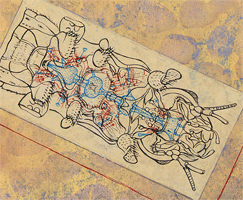
Anatomical Drawings – Often stripped back raw parts, reflective of anatomical areas, like the spine on 'Drummer Boy' and the representation of embryo's throughout works. The Anatomy of insects and their ability to metamorphose is also a fascination for the artist. In 'Summer Melancholy Fed By The Energy Of A Beehive' drawings from Medical Catalogues feature. There is a constant interaction between the mechanics of form and how it relates to the other subjects in the composition, this can be a deliberate political, ideological or psychological juxtaposition.
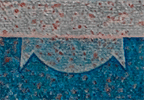
Bats – Are a symbol of the dark, mystery and worry.
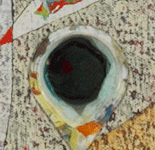
Bullet holes – Are shown as physical holes in the canvas, in 'The Birth of A King' the two parental figures placed either side of the main embryo have bullet holes in their heads and represent the cycle of life and death before the child, and 'The General' which also represents a father figure, also has a bullet hole through the canvas.
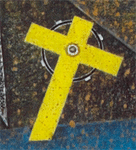
Crosses – Crosses are one of the most prevalent symbols used by Vorobyev. Crosses appear as a mosaic like background ('Drummer Boy' and '26 Heads On A Copper Background' are good examples), they are clasped in hands, intertwined with forms or appear to be scattered across a composition. 'A cross to me is the most powerful and beautiful symbol. It is not only the cross Christ was crucified on. The cross is my childhood again – with crosses of window frames of old houses, masts of ships, it is a handle of a sword, mediaeval Europe, crusaders, a razor blade, it is a battle, a struggle of the vertical and horizontal lines, of the spiritual and the material worlds.' Alexander Vorobyev
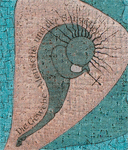
Embryo – A symbol of rebirth and something new. Of the start of metamorphosis.
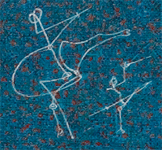
Horses – Often depicted with a riding warrior figure, they represent prevalent battle.
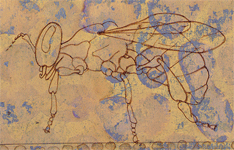
Insects – Vorobyev has a fascination with insects and their ability of metamorphose during their life cycle. They are looked upon as almost magical and alien. Trapped insects are held with the painted surfaces of Vorobyev's works as well as drawn out within a composition. They symbolise metamorphosis, are shown individually, in groups or often insects are intertwined with human forms.
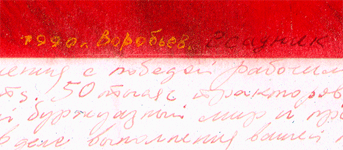 Letters, words, sentences, paragraphs – Typography is everywhere, tumbling letters, peoples name's, words, sentences, newspaper clippings and whole written out paragraphs are used both inside main compositions and outside, skirting the edges of the main image depicted. Typography is used to highlight profound ideological, sociological, political and historical meanings when aligned with the images portrayed. A good example of this is the 'Spanish Horseman,' a striking red image depicting an abstract burning horse and dancing figure. The main red image is surrounded by written passages of Stalin's views on philosophy and his dislike for the abstract.
Letters, words, sentences, paragraphs – Typography is everywhere, tumbling letters, peoples name's, words, sentences, newspaper clippings and whole written out paragraphs are used both inside main compositions and outside, skirting the edges of the main image depicted. Typography is used to highlight profound ideological, sociological, political and historical meanings when aligned with the images portrayed. A good example of this is the 'Spanish Horseman,' a striking red image depicting an abstract burning horse and dancing figure. The main red image is surrounded by written passages of Stalin's views on philosophy and his dislike for the abstract.
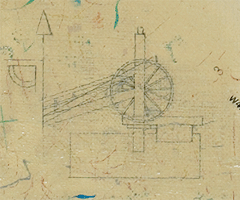
Machines – Small drawn studies of machines appear in many of Vorobyev's works and are reminiscent of Da Vinci. They are shown separately or presented as part of a working part of a mechanical character.
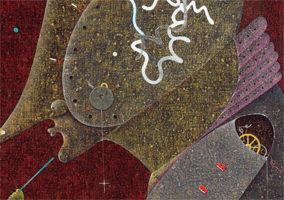
Mechanical Dolls – Inspired by Goffman's tale of the The Nutcracker, in Vorobyev's work 'Promenades with Pushkin' we see a group of three mechanical dolls with no soul, that look like theatrical string puppets. The main doll is shown with a brain washing tool box and attempting to trapan a representation of Pushkin's scull. The dolls represent mechanical action with no emotional regard.
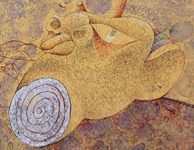
Monsters – Symbol of metamorphosis often made up of human and insect forms, reflective of the psychological concepts and juxtapositions portrayed.
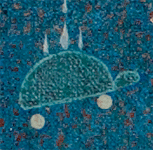
Terrapins – Terrapins are present in a huge number of Vorobyev's works – they are shown on fire, in formation as a group, they are used by characters of human like form to stand on, this can be seen very clearly in the painting; 'The Birth Of A King'. The terrapin represents hardness on the outside with a soft vulnerability on the inside, they are used as the representation of a tank – as a weapon with it's own armour.
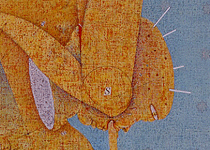
Severed Limbs – The depiction of served limbs (or objects) is present throughout Vorobyev's works and stem from a childhood memory of a visit to one of the concentration camps. Generally a served limb or object is used as a representation of pain.
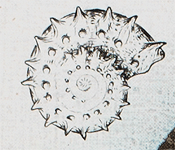
Snails – A symbol used to represent the vulnerability of soft insides covered by a strong and hard external armour.
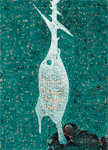
Swordfish – from 'Mozart With A White Fish And A Violin' – Representative of pain and tension, the swordfish functions as the bow of the violin and also resembles a saw, there is no way music can be made without pain. There is always the tension and torment of creation.
Warrior Figure, often with quiver of arrows and bow – These figure's can be reflective of a particular event or time – but are also portrayed in a manner that is relevant and reflective of what a warrior represents. Although the 'Drummer Boy' reflects a warrior of the red army (with the red star on his hat) and is reflective of the battle between the Stalinist government's ideology, the church and the Russian people; the warrior is used to represent somebody against something, war for the sake of division, where good and evil, god and the devil, become intertwined.

